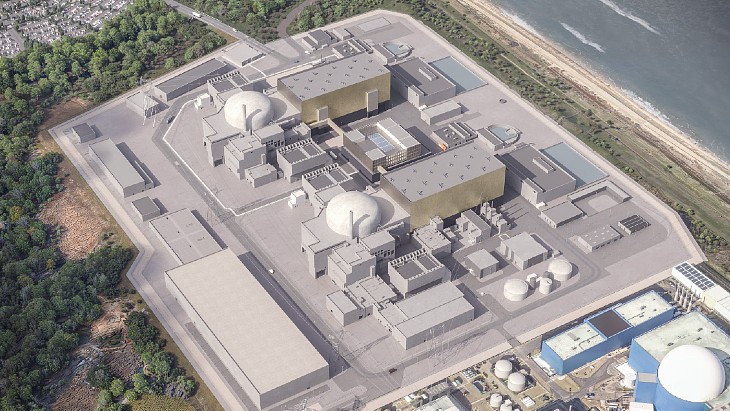The lead fuel assembly of enhanced accident tolerant fuel (E-ATF) was first loaded into unit 2 at the plant in Maryland in 2021, completing 24 months of operation before being examined and reinserted for an additional two years of operation in 2023. Teams from Framatome and Constellation inspected the assembly during the 2023 spring refuelling outage, after its first 24-month cycle, and again during the 2025 spring refuelling outage after completion of its second 24-month cycle of operation in the pressurised water reactor (PWR). The assembly will complete its third 24-month cycle of operation at Calvert Cliffs in spring 2027, after which it will be shipped to a US Department of Energy (DOE) national laboratory for post-irradiation examination to help inform licensing activities.
Accident-tolerant fuel - ATF - is a term used to describe new technologies that enhance the tolerance of light-water reactor fuel under severe accident conditions as well as offering improvements to reactor performance and economics. Such fuels may incorporate the use of new materials and designs for cladding and fuel pellets.
The fuel assembly contains 176 chromium-coated rods and chromia-enhanced pellets, which DOE - which is supporting Framatome's PROtect E-ATF programme - said can better respond to changes in the reactor core and are expected to reduce corrosion and hydrogen production under high-temperature conditions.
The fuel assembly was fabricated at Framatome's manufacturing facility in Richland, Washington, as part of a 2019 contract with Constellation. Chromia-enhanced pellets - which can be produced at Richland on an industrial scale - are now a standard feature in Framatome's ATRIUM 11 boiling water reactor fuel design, with reloads operating at eight US commercial power plants, the company said.
"The performance of our technology continues to demonstrate the expertise of our people to develop safe, cost-effective solutions for our customers and our industry," said Lionel Gaiffe, senior executive vice president, Fuel Business Unit at Framatome. "The Constellation team has been instrumental in helping us reach this milestone, leading the industry integrating accident tolerant fuel characteristics into their operations."
The fuel prototype builds on previous testing in the USA and Switzerland through Framatome's PROtect programme and could deliver the industry's first major upgrade to nuclear fuel and cladding technologies since the 1970s, DOE said.
"This public-private partnership is helping to drive the fulfillment of national power demands and executive orders issued by President Trump," said Frank Goldner, the federal programme manager for the DOE's Accident Tolerant Fuel Program. “This fuel assembly will continue operating under commercial conditions, providing crucial data to support the nation's energy objectives."
Framatome, GE Vernova, and Westinghouse are all testing fuel concepts in commercial reactors across the USA with the goal of widespread adoption by 2030, the DOE said.

_46884.jpg)



_55530.jpg)
_42372.jpg)
_37521_70699.jpg)

_76087_55556.jpg)



